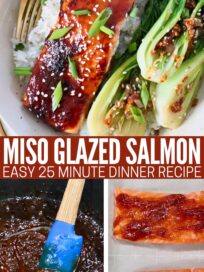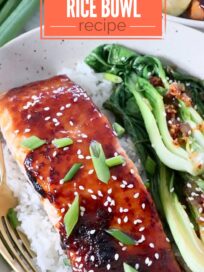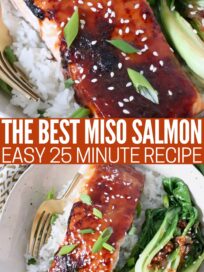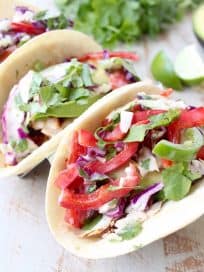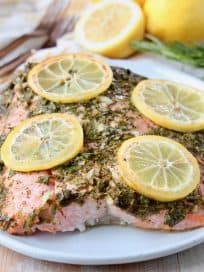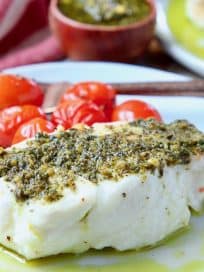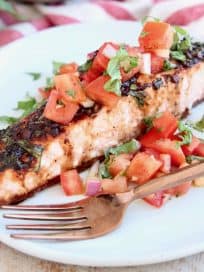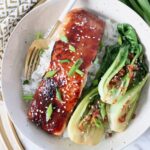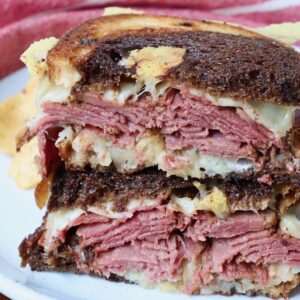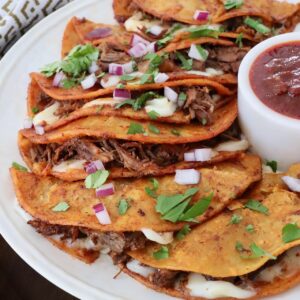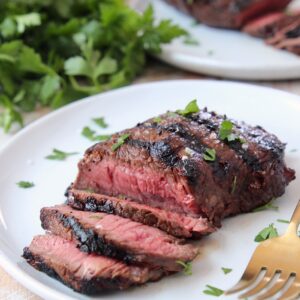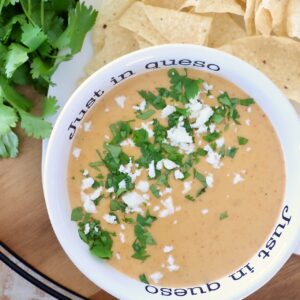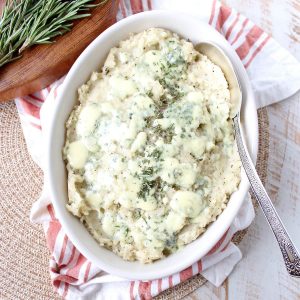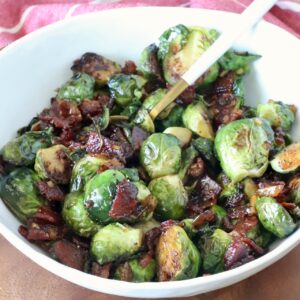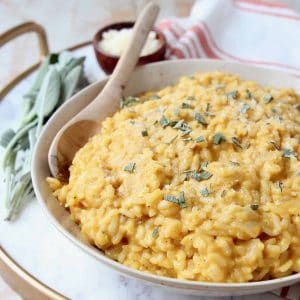Miso Salmon
This post may contain affiliate links.
Make the best Miso Salmon at home with this easy recipe that’s made in just 25 minutes with only 6 ingredients. The sweet and salty miso glaze caramelizes over the salmon in the oven for melt-in-your-mouth goodness. It’s delicious, easy to make, and I guarantee, this will become your new favorite salmon recipe!
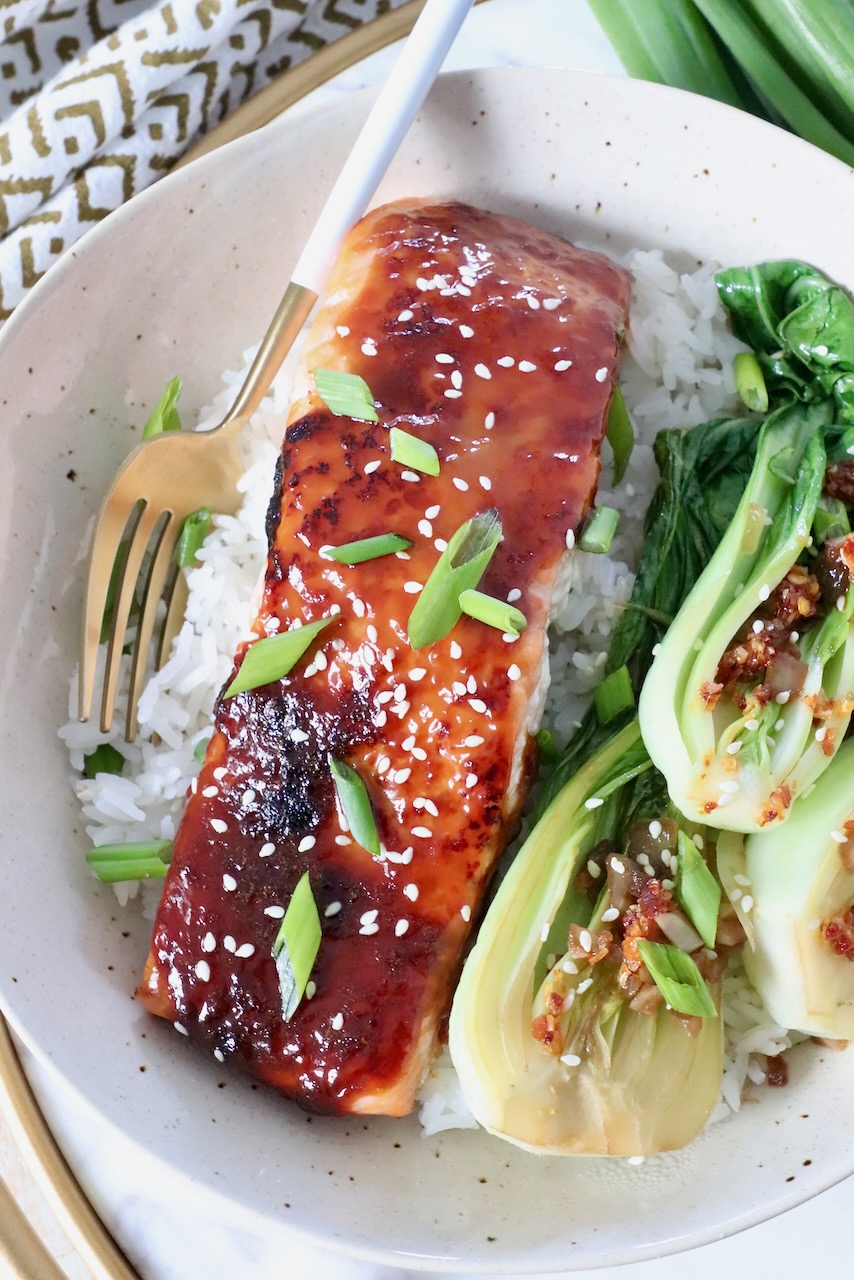
If there’s miso black cod on the menu at a Japanese restaurant, I always order it. This is one of my favorite meals ever! One night when I was making salmon for dinner, I thought about making a similar miso glaze for the salmon.
As soon as I made it, I knew that this recipe had to go on the blog ASAP! The sticky sweet miso glazed salmon literally melts in your mouth. It tastes delicious and it’s incredibly easy to make. There’s no marinade required, just whip up the glaze, cover the salmon and bake it in the oven.
This recipe is now in regular rotation at our house every week, and I can’t wait for you to try it at home. A light and delicious recipe that’s easy to make in less than 30 minutes, sign me up!
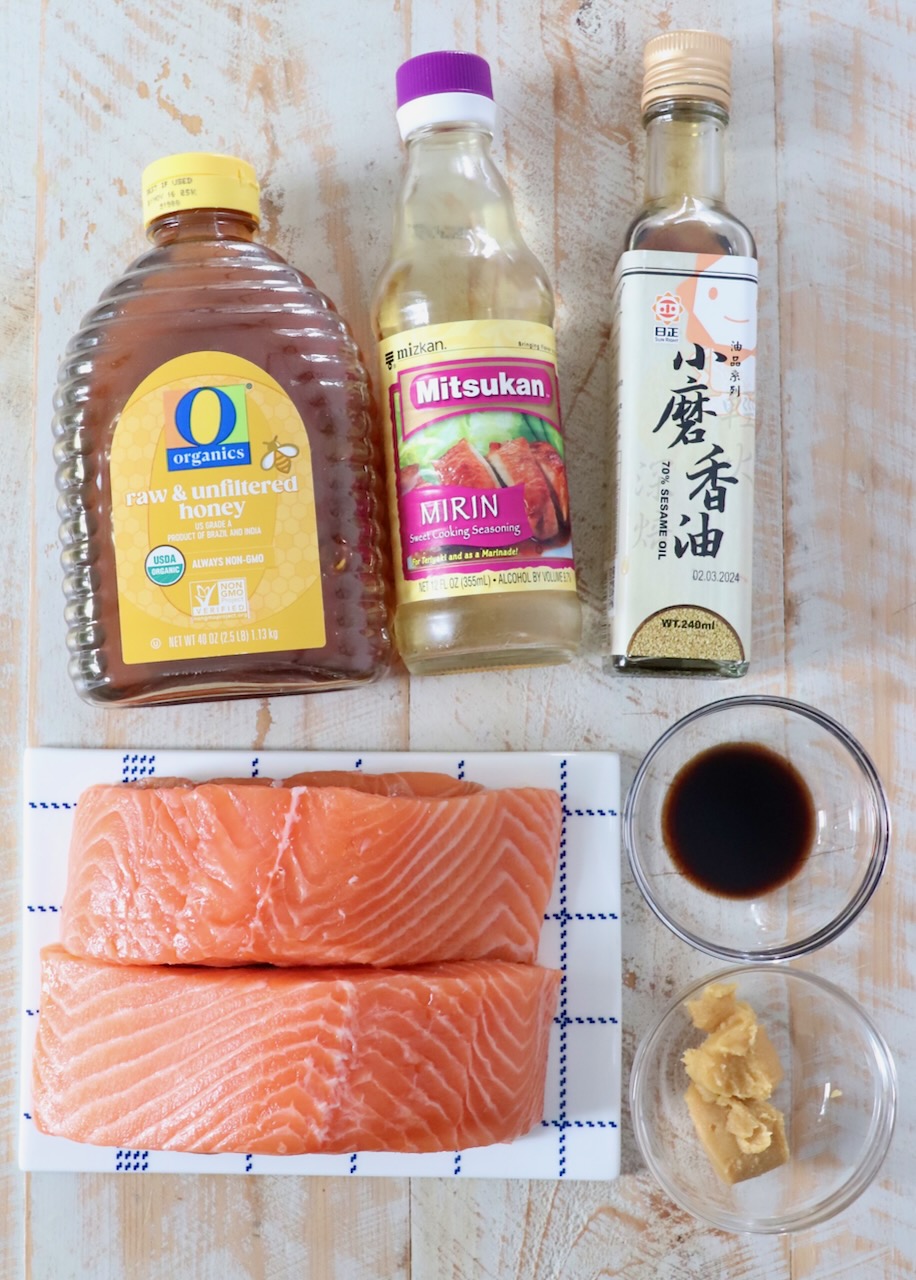
Ingredients
Here I explain the best ingredients for this miso salmon recipe, what each one does, and substitution options. For the exact ingredient measurements, see the recipe card at the bottom of this post.
- Salmon – I recommend using four salmon fillets for this recipe that are between 6-8 ounces each. Try to find filets that are similar thickness so that each piece of salmon cooks evenly.
- Miso paste – if you’re not familiar with miso paste, it’s a delicious fermented soybean paste that adds a wonderful umami flavor to recipes. You can find it at most major grocery stores in the refrigerated vegan section of the store, near the produce. Trader Joe’s has also started selling their own white miso, which is really good. And you can always find miso paste at Asian markets. For this recipe, I recommend white miso, also known as shiro miso. Compared to the other different types of miso, including yellow miso, red miso and brown miso, the white miso is fermented for the shortest period of time. This makes the flavor of white miso milder and sweeter, while the other miso pastes are saltier and have a stronger, more savory flavor. Even though it’s called white miso, the color will range from pale yellow to light beige.
- Honey – is added to sweeten the glaze and give the miso salmon a wonderful caramelization as it cooks. You could also use maple syrup to replace the honey.
- Mirin – this is a Japanese cooking rice wine that you can find in the Asian section of most major grocery stores. It adds a slight sweetness, tang and umami flavor to the salmon glaze. If you can’t find mirin, you can use rice vinegar, sake or white wine in it’s place.
- Soy sauce – for this recipe, I recommend a low sodium soy sauce. The miso paste already adds saltiness to this recipe, so a full-sodium soy sauce might make this recipe too salty for some people.
- Sesame oil – this oil adds a nutty flavor to the glaze and will help the salmon brown on the outside.
Instructions
I’ve included step by step photos below to make this miso salmon recipe super easy to follow at home. For the full detailed recipe instructions and ingredient quantities, scroll to the recipe card at the bottom of this post.
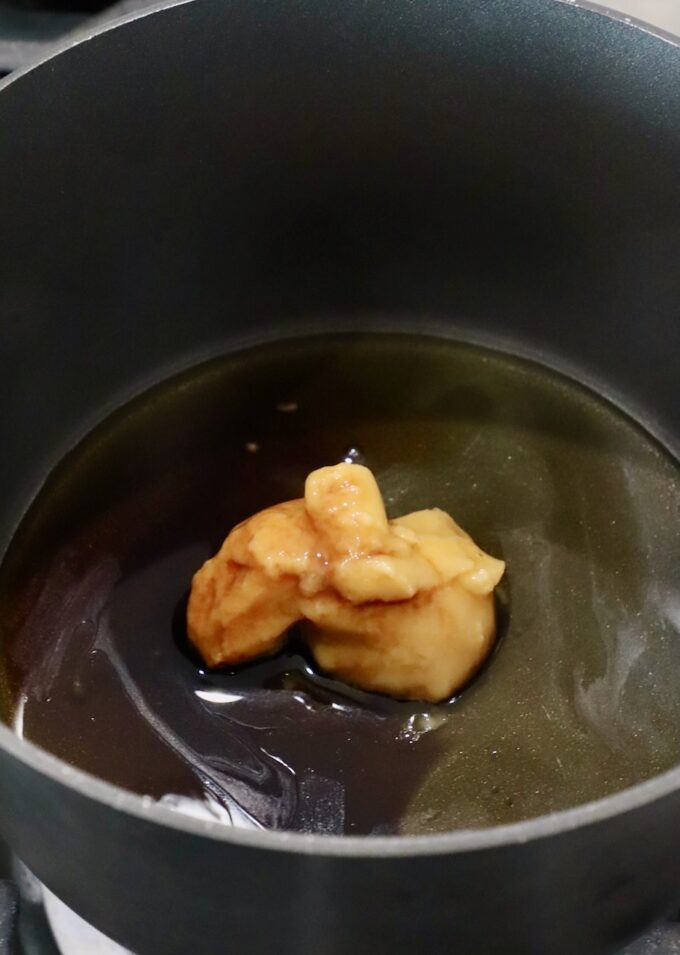
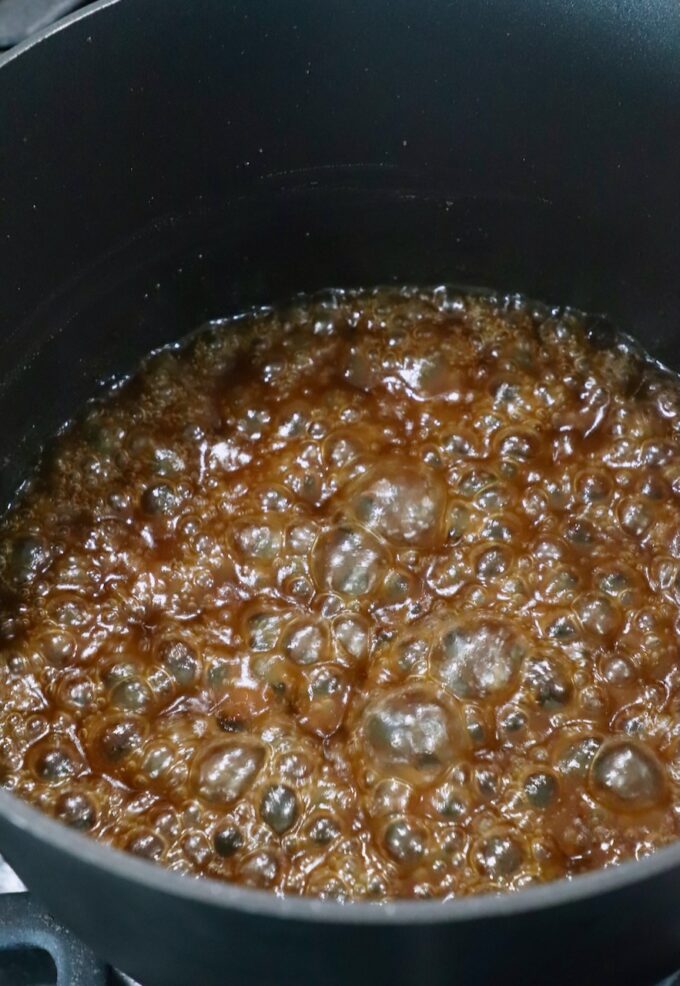
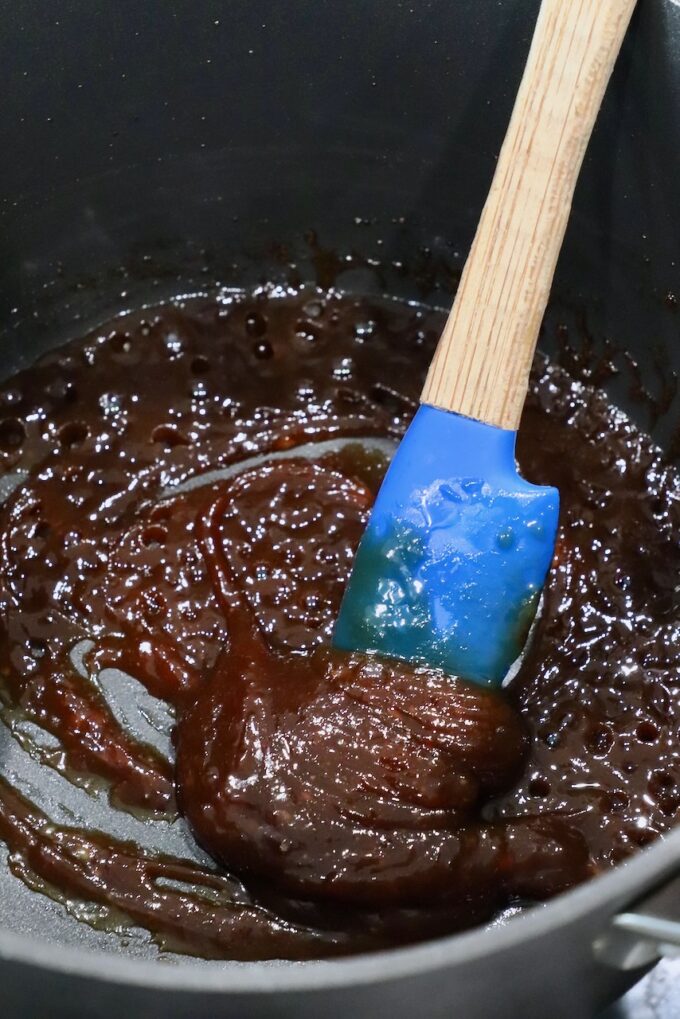
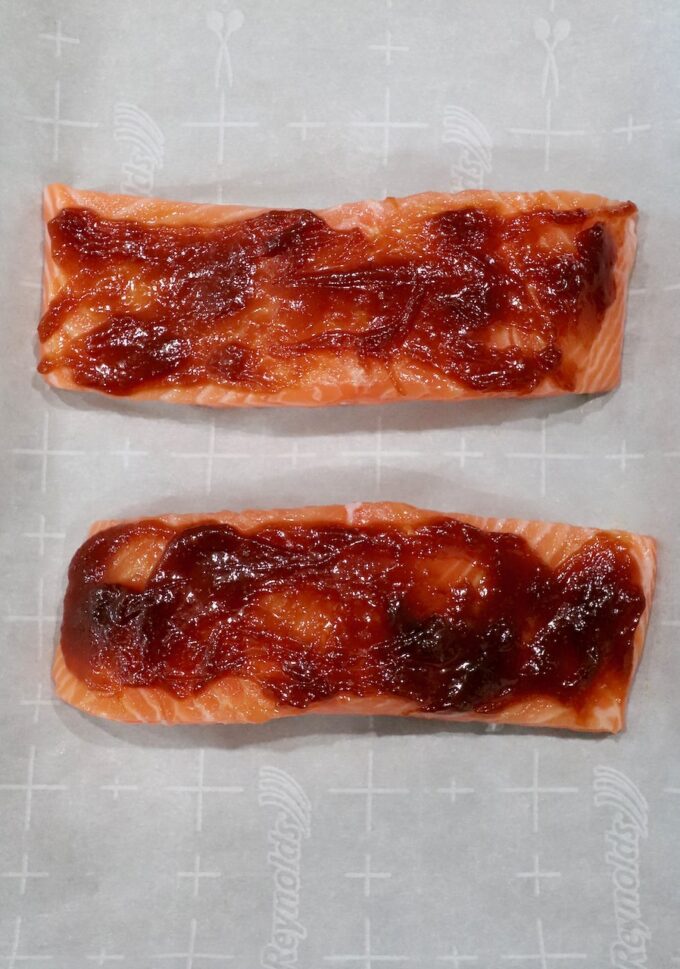
- Make the miso glaze. Add miso paste, honey, mirin, soy sauce and sesame oil to a small saucepan on the stove over medium-high heat. Stir to combine all of the ingredients and bring it to a simmer. Simmer the glaze for 5-7 minutes, stirring frequently, until it thickens. Remove the glaze from the heat and let it cool for 5 minutes. It will thicken up more during this time.
- Glaze the salmon. Place the salmon filets on a baking sheet lined with parchment paper or aluminum foil. This will make clean-up easy and prevent the salmon from sticking to the baking sheet. Spread the glaze evenly over the pieces of salmon.
- Bake the salmon. Place the salmon on the middle rack of a preheated 425°F oven. Cook for 10 minutes. Turn the oven from bake to broil on high. Cook the salmon for an additional 1-2 minutes under the broiler, or until the glaze begins to bubble and brown on top of the salmon. Always watch the salmon in the oven while it’s under the broiler to make sure it does not burn. Remove the miso salmon from the oven and serve immediately. Optionally garnish with sesame seeds and diced green onions.
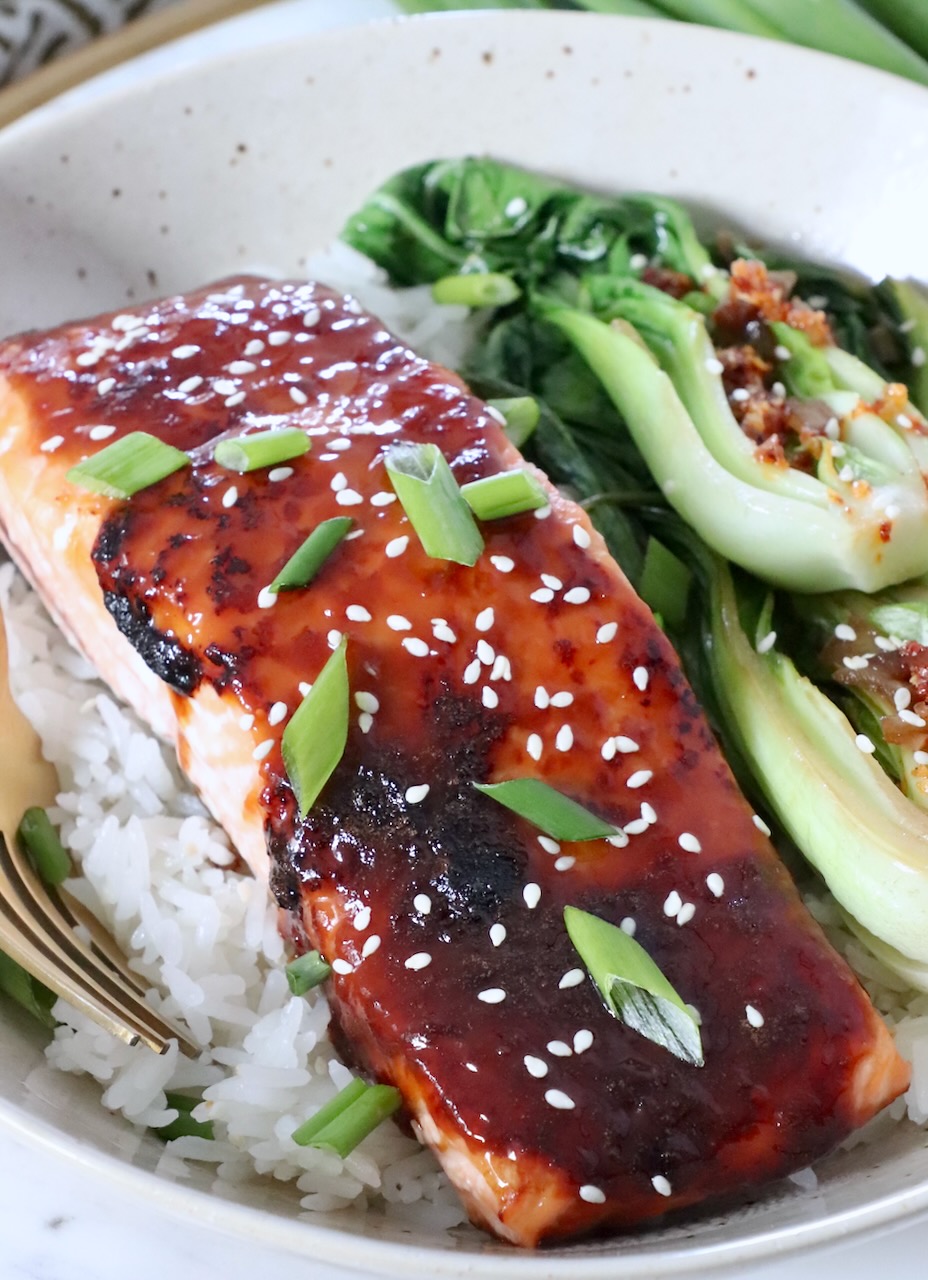
What to serve it with
The miso salmon pictured throughout this post is served in a bowl with cooked white rice and baby bok choy. You can also serve it with any of these other delicious side dishes to make a complete meal.
More seafood recipes
Add these scrumptious seafood recipes to your weekly menu!
Miso Salmon
Ingredients
- 4 tablespoons white miso paste
- 2 tablespoons honey
- 2 tablespoons mirin, or rice vinegar
- 2 teaspoons low-sodium soy sauce
- 1 teaspoon sesame oil
- 4 salmon fillets, 6-8 ounces each
Instructions
- Preheat the oven to 425°F.
- Add the miso paste, honey, mirin, soy sauce and sesame oil to a small saucepan on the stove over medium-high heat.
- Simmer the glaze for 5-7 minutes, stirring regularly, until the glaze thickens.
- Set the glaze aside to cool for 5 minutes.
- Place the salmon fillets on a parchment-lined baking sheet.
- Spread the glaze from the pan evenly over the filets of salmon.
- Place the salmon in the oven on the middle rack and cook for 10 minutes.
- Turn the oven from bake to broil on high.
- Cook the salmon for an additional 1-2 minutes under the broiler, or until the glaze begins to bubble and brown on top of the salmon. Always watch the salmon while it's under the broiler to make sure it does not burn.
- Optional: garnish the salmon with sesame seeds and diced green onions before serving.
Notes
- Don’t skip the step of broiling the salmon at the end. This is when the glaze will really start to caramelize over the salmon and give it the sticky sweet texture on top.
- Always try to purchase salmon filets that are similar in size. If one piece of salmon is much smaller than the others, you might have to adjust the cooking time for that piece of salmon so that it doesn’t overcook. I recommend adding it to the baking sheet 2 minutes into the cooking time for the other filets.
- This recipe is made with salmon that is 1 inch thick at the thickest part of the filet. If you’re using salmon that’s much thinner, I would recommend taking 2-3 minutes off of the initial 10 minute cook time.
- You do not need to remove the skin on the salmon before cooking it. And I actually don’t recommend it because the skin will keep the salmon moist as it cooks in the oven. The salmon’s flesh will easily peel away from the skin after you cook it. After eating the salmon, you can discard the leftover salmon skin.
- If your oven does not have a broiler, simply continue to bake the salmon for an additional 2-5 minutes, for a total cook time of 12-15 minutes.
- Salmon will turn from a bright orange/red color to an opaque pink as you cook it. For each inch of thickness, you should cook the salmon for 10 minutes. The thickest part of a center-cut salmon filet is generally about 1 inch. If your salmon is thicker or thinner, adjust the cooking time accordingly.
- Salmon should be cooked to an internal temperature of 110°F (for rare) to 145°F (for well done). Remember that the salmon will continue to cook after you remove it from the oven. I recommend removing the salmon when it reaches 5-10 degrees under your desired temperature.
Nutrition Facts
We are a participant in the Amazon Services LLC Associates Program, an affiliate advertising program designed to provide a means for sites to earn advertising fees by advertising and linking to amazon.com.


